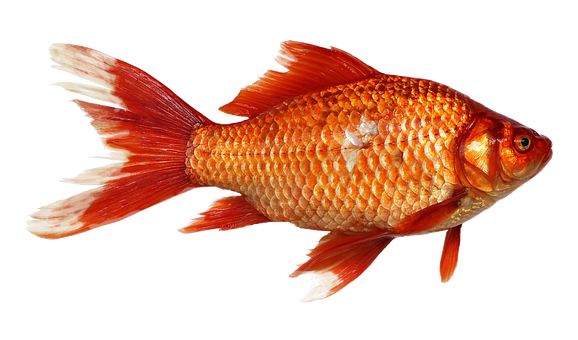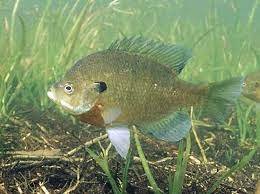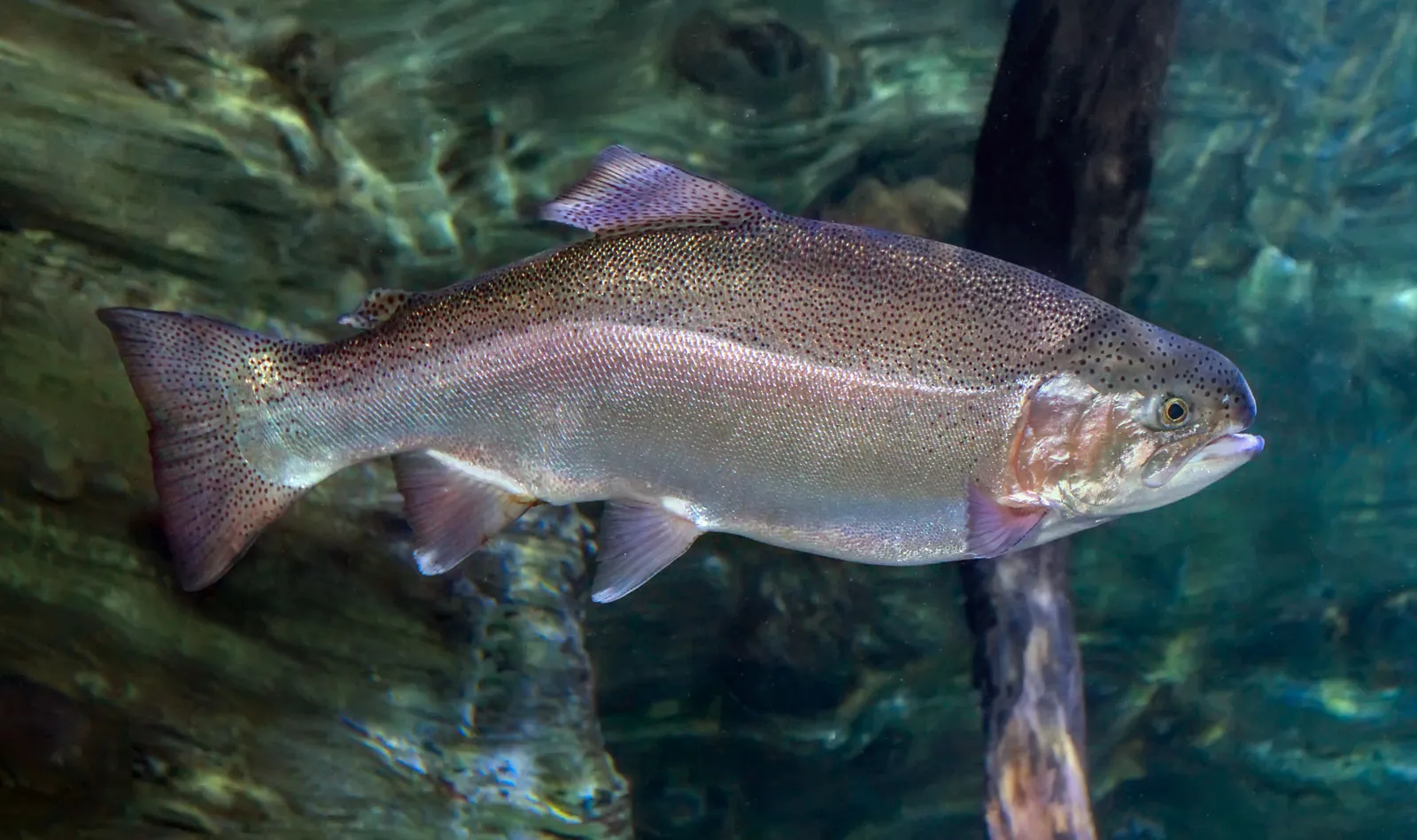Goldfish Facts, FAQs, Behaviour, Habitat, Conservation and More
 Goldfish Facts
Goldfish FactsGoldfish Facts | Description | Distribution and Habitat | Conservation | Behaviour and Ecology | Interaction with Human | Cultural | Interesting facts | frequently asked questions about Goldfish
Goldfish are one of the most popular and beloved species of freshwater fish around the world. Known for their bright and vibrant colors, playful personalities, and easy-to-care-for nature, these charming creatures have captured the hearts of hobbyists and casual aquarium enthusiasts alike.
Whether you’re a seasoned fishkeeper or just starting out, goldfish are an excellent choice for any aquarium. From their unique appearance to their active and lively behavior, there’s never a dull moment with these little swimmers. So if you’re looking to add some excitement and beauty to your aquatic world, consider bringing home some goldfish today!
Taxonomy of Goldfish
| Kingdom | Animalia |
|---|---|
| Phylum | Chordata |
| Class | Actinopterygii |
| Order | Cypriniformes |
| Family | Cyprinidae |
| Genus | Carassius |
| Species | Carassius auratus |
Morphology of Goldfish
| Characteristic | Description |
|---|---|
| Body Shape | Rounded and elongated |
| Fins | Dorsal, caudal, anal, and pectoral fins present |
| Scales | Large, overlapping scales |
| Color | Wide range of colors including orange, red, yellow, white, and black |
| Eyes | Large, protruding |
| Mouth | Protrusible mouth |
| Size | Can grow up to 12 inches (30 cm) in length |
| Lifespan | Average lifespan of 10-15 years |

Description of Goldfish
Goldfish, scientifically known as Carassius auratus, are a species of freshwater fish that belong to the family Cyprinidae. They are native to East Asia, but have been widely introduced and kept as pets around the world. These fish are characterized by their rounded and elongated body shape, large, protruding eyes, and a range of bright and vibrant colors including orange, red, yellow, white, and black.
Goldfish have a unique morphology, with large, overlapping scales that provide protection from predators and a wide variety of fins, including dorsal, caudal, anal, and pectoral fins. Their mouth is also unique in that it is protrusible, meaning that they can extend their mouth outwards to capture prey.
These fish are known for their lively and active behavior, often swimming in schools and exploring their surroundings. They are also relatively easy to care for, making them a popular choice for beginner fishkeepers. Goldfish can grow up to 12 inches (30 cm) in length and have an average lifespan of 10-15 years, although with proper care, some individuals have been known to live for over 20 years.
In conclusion, goldfish are a beautiful and fascinating species of freshwater fish with a unique morphology and lively personality. Their bright colors and playful behavior make them a popular choice for aquarium enthusiasts of all skill levels, and with proper care, they can provide years of enjoyment and companionship.
Distribution and habitat of Goldfish
Goldfish (Carassius auratus) are a freshwater fish species that are native to East Asia, specifically China and Korea. However, they have been introduced and are now widely distributed around the world, including North America, Europe, South America, and Africa.
In their native range, goldfish inhabit slow-moving rivers, ponds, and lakes with vegetation and sandy or muddy bottoms. They are often found in shallow waters, where they can easily feed on plants, insects, and small crustaceans.
Outside of their native range, goldfish have been introduced and established in a variety of aquatic habitats, including ponds, lakes, rivers, and even artificial water features such as fountains and ornamental ponds. They are highly adaptable and can tolerate a wide range of water temperatures and conditions, which has contributed to their success as an introduced species.
However, the introduction of goldfish into non-native habitats can have negative impacts on native aquatic ecosystems. They have been known to compete with native fish for resources and can alter the physical and chemical properties of the water. Therefore, it is important to prevent the release of goldfish into natural water bodies and to properly manage populations where they have already become established.
In summary, goldfish are a widely distributed freshwater fish species that are native to East Asia but have been introduced and established in habitats around the world. They are highly adaptable and can tolerate a wide range of water conditions, but their introduction into non-native habitats can have negative impacts on native ecosystems.
Behaviour and Ecology of Goldfish
Goldfish (Carassius auratus) are a species of freshwater fish with a unique behavior and ecology. They are social animals and often swim in schools, especially when they are young. Goldfish are active during the day and spend much of their time exploring their surroundings and foraging for food.
In their natural habitat, goldfish are omnivorous and feed on a variety of food sources, including plants, insects, crustaceans, and small fish. They have a protrusible mouth that allows them to suck in food from the water or grab food from the bottom.
Goldfish are highly adaptable and can tolerate a wide range of water conditions, which has contributed to their success as a widely distributed introduced species. They can survive in both warm and cold water, and can even survive in water with low oxygen levels.
In terms of reproduction, goldfish are known to breed in the spring and early summer when water temperatures rise. Males will chase and court females, and the female will lay hundreds of eggs in a protected area, such as a plant or a crevice. The male will then fertilize the eggs and guard them until they hatch.
While goldfish are beloved pets and are often kept in home aquariums, their introduction into non-native habitats can have negative ecological impacts. They can compete with native fish for resources, alter the physical and chemical properties of water, and even spread disease. Therefore, it is important to properly manage goldfish populations and prevent their release into natural water bodies.
In conclusion, goldfish are a unique and fascinating species of freshwater fish with a diverse ecology and social behavior. While they are popular pets, their introduction into non-native habitats can have negative ecological impacts, highlighting the importance of proper management and prevention of their release into natural water bodies.
Conservation of Goldfish
Goldfish (Carassius auratus) are not currently considered to be a threatened or endangered species, as they are widely distributed and have established populations in many parts of the world. However, their introduction into non-native habitats can have negative ecological impacts and can threaten native fish populations. Therefore, it is important to take measures to prevent their introduction into natural water bodies and to properly manage populations where they have become established.
One way to prevent the introduction of goldfish into non-native habitats is through public education and outreach. By educating the public on the potential negative impacts of releasing pet goldfish into natural water bodies, individuals can make informed decisions about responsible pet ownership and the proper disposal of unwanted pets.
In addition, proper management of established goldfish populations can help mitigate their negative ecological impacts. This can include measures such as trapping and removal, or the use of natural predators or biological controls to help control their population size.
Conservation efforts can also focus on protecting and restoring native fish populations and their habitats. By restoring and protecting native aquatic ecosystems, we can help maintain healthy and diverse fish populations and prevent the spread of invasive species like goldfish.
In conclusion, while goldfish are not currently considered a threatened or endangered species, their introduction into non-native habitats can have negative ecological impacts and threaten native fish populations. Proper education, management, and conservation efforts can help mitigate these impacts and protect our aquatic ecosystems for future generations.
Interaction with Human of Goldfish
Goldfish (Carassius auratus) have a long history of interaction with humans, dating back thousands of years to their domestication in ancient China. Today, goldfish are one of the most popular species of fish kept in home aquariums and are also commonly found in outdoor ornamental ponds and water features.
As pets, goldfish are relatively easy to care for and can live for several years with proper care. They are a popular choice for families and individuals looking for a low-maintenance and visually appealing pet.
However, the popularity of goldfish as pets has also led to their introduction and establishment in non-native habitats, which can have negative ecological impacts. Goldfish are known to compete with native fish for resources, alter water chemistry and physical properties, and even spread disease. Therefore, it is important to properly manage populations of introduced goldfish and prevent their release into natural water bodies.
Goldfish have also played a significant role in scientific research. They have been used as model organisms in studies of genetics, embryology, and behavior, among other areas. Their hardy nature and adaptability make them ideal for laboratory studies.
In addition, goldfish have cultural and historical significance in many parts of the world. In China, goldfish are considered a symbol of good luck and prosperity, and are often featured in artwork and celebrations. They have also been used in traditional Chinese medicine for their supposed health benefits.
In conclusion, goldfish have a rich history of interaction with humans and play important roles as pets, model organisms in scientific research, and cultural symbols. However, their introduction into non-native habitats can have negative ecological impacts, highlighting the importance of proper management and prevention of their release into natural water bodies.
Cultural and Historical Significance of Goldfish
Goldfish (Carassius auratus) have been a significant part of human culture and history for thousands of years. Originally domesticated in ancient China over a thousand years ago, goldfish were selectively bred for their beautiful colors and patterns. They soon became popular as ornamental fish, and were often kept in ponds and aquariums in wealthy households.
In China, goldfish are considered to be a symbol of good luck and prosperity. They have been featured in traditional Chinese artwork and literature, and are often associated with important cultural celebrations, such as the Chinese New Year. Goldfish are also used in traditional Chinese medicine for their supposed health benefits.
The popularity of goldfish as ornamental fish soon spread to other parts of the world, and they became a favorite of hobbyists and fish enthusiasts. Today, goldfish are one of the most popular species of fish kept in home aquariums and are commonly found in outdoor ornamental ponds and water features.
Goldfish have also played a role in scientific research. Their hardy nature and adaptability make them ideal for laboratory studies, and they have been used as model organisms in studies of genetics, embryology, and behavior, among other areas.
In conclusion, goldfish have had a significant cultural and historical impact on human society. They are revered as symbols of good luck and prosperity in many parts of the world, and are popular as ornamental fish and pets. Their use in traditional Chinese medicine and their role in scientific research further highlights their importance in human culture and history.
Explanatory Notes for Goldfish
- Explanatory notes for this fish could refer to additional information or clarifications provided about the fish in question. This could include notes about its biology, behavior, distribution, or any other relevant characteristics or features. These notes could be included in a scientific paper, a field guide, or any other publication or document that provides information about the fish.
- Explanatory notes for this fish could also refer to annotations or comments made by an expert or a reviewer about a piece of writing or research that discusses the fish. These notes could provide feedback or constructive criticism, point out errors or inconsistencies, or offer suggestions for improvement.
- Finally, explanatory notes for this fish could be a reference tool or guide that provides information about the fish in question in a concise and easy-to-understand format. This could include basic facts about the fish’s taxonomy, morphology, behavior, and distribution, as well as any other relevant information that may be useful for researchers, students, or anyone else interested in the fish.
Interesting facts about Goldfish
- Goldfish are actually a type of carp, and are closely related to koi.
- The oldest known goldfish lived to be 43 years old!
- Goldfish have a special organ called the “labyrinth organ” that allows them to absorb oxygen from the air, in addition to getting it from the water.
- They have excellent memories and can be trained to recognize their owners and even perform tricks.
- Goldfish come in a wide variety of colors, including orange, white, black, and red.
- They have been bred for centuries to create new and interesting color patterns, including calico and metallic scales.
- Goldfish are social creatures and prefer to live in groups of two or more.
- They have been used as model organisms in scientific research on a variety of topics, including genetics, toxicology, and environmental studies.
- Goldfish are considered to be symbols of good luck and prosperity in many cultures around the world.
- Contrary to popular belief, goldfish actually have quite good eyesight and can see colors and distinguish between different shapes.
General queries or frequently asked questions about Goldfish
What size aquarium do goldfish need?
Goldfish require a larger aquarium than many other common pet fish. A good rule of thumb is to provide 20 gallons of water for the first goldfish, and an additional 10 gallons for each additional goldfish. This allows for enough space for the fish to swim and grow, and for proper filtration and water quality.
What do goldfish eat?
Goldfish are omnivores and will eat a variety of foods, including commercial fish flakes or pellets, live or frozen food such as brine shrimp or bloodworms, and even vegetables like lettuce or peas.
How often should I clean my goldfish tank?
It’s important to keep the water in a goldfish tank clean to maintain good water quality and avoid health problems. As a general rule, you should aim to change 20-25% of the water in the tank every week. It’s also a good idea to clean the filter and gravel periodically to remove excess waste.
Do goldfish need a heater?
Goldfish are cold-water fish and do not require a heater in most cases, as long as the room temperature is kept within a comfortable range (around 68-72 degrees Fahrenheit). However, in colder climates or during the winter months, a heater may be necessary to maintain a consistent water temperature.
Can goldfish live with other fish?
Goldfish can live with other cold-water fish that have similar temperaments and water requirements, such as koi or minnows. However, it’s important to avoid mixing goldfish with tropical fish that require warmer water or have different feeding requirements.
How long do goldfish live?
With proper care, goldfish can live for many years. The average lifespan of a goldfish is around 10-15 years, but some have been known to live for much longer, up to 20 or even 30 years in some cases.
Can goldfish live in a bowl?
Goldfish should not be kept in a bowl, as they require a larger aquarium with proper filtration and water quality to thrive. A bowl does not provide enough space or oxygen for a goldfish to live a healthy and happy life.
Do goldfish sleep?
Yes, goldfish do sleep! They typically rest at the bottom of the tank or in plants during periods of low activity, and may appear motionless or with reduced breathing rate. However, they are always alert and can quickly wake up if disturbed.
How can I tell if my goldfish is healthy?
Healthy goldfish should have bright, clear eyes, active swimming behavior, and a healthy appetite. They should also have clean and unblemished scales and fins, and be free of signs of disease such as lethargy or abnormal behavior. Regular observation and water testing can help detect any potential health issues early on.
Can goldfish recognize their owners?
Yes, goldfish have been known to recognize their owners and even show excitement when they approach the tank. They have excellent memories and can be trained to associate certain behaviors with food or treats.
Conclusion
In conclusion, the goldfish is a fascinating and popular fish species that has captured the hearts of fish enthusiasts worldwide. With their unique colors, shapes, and personalities, goldfish have become a beloved pet for many people. Despite their popularity, however, goldfish require proper care and attention to thrive, including a suitable tank size, appropriate water quality, and a balanced diet. Goldfish are also significant in cultural and historical contexts, with their origins dating back to ancient China. As with any animal, it’s important to understand their behavior, ecology, and conservation status to ensure their welfare and survival. Whether you are a seasoned fish owner or a beginner, the goldfish is a fascinating and rewarding fish species that is sure to provide many years of enjoyment and companionship.












